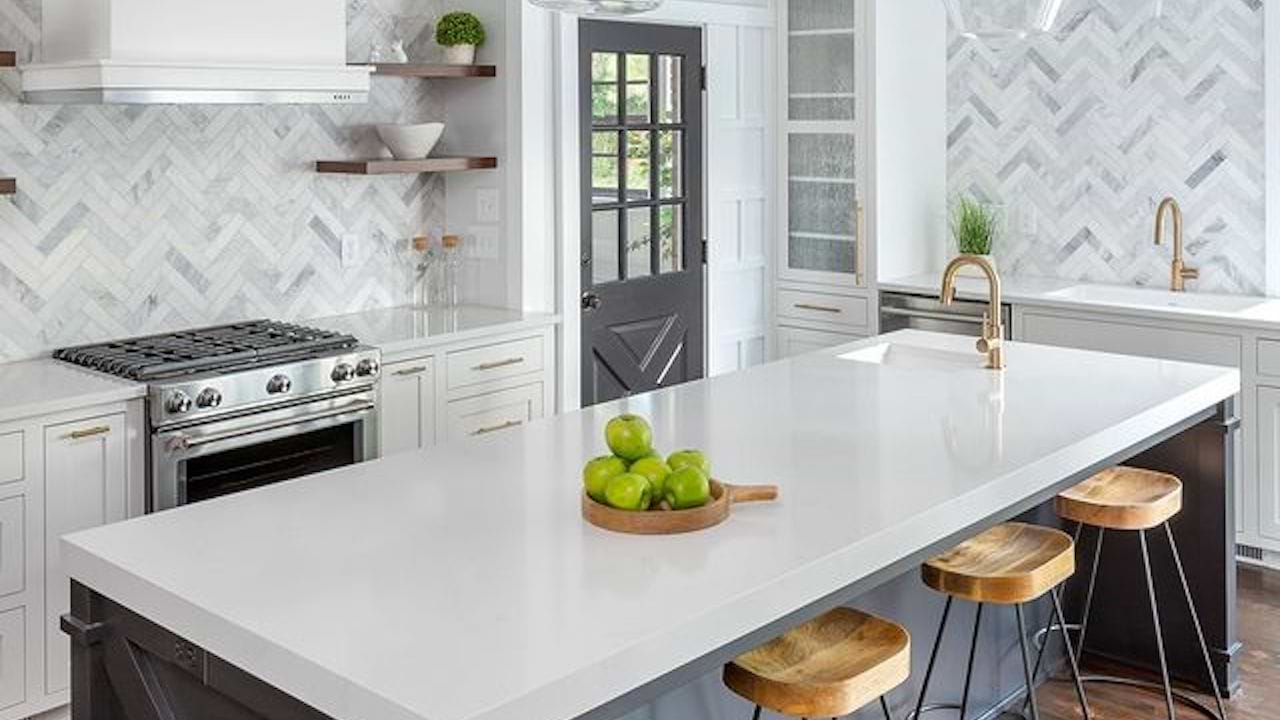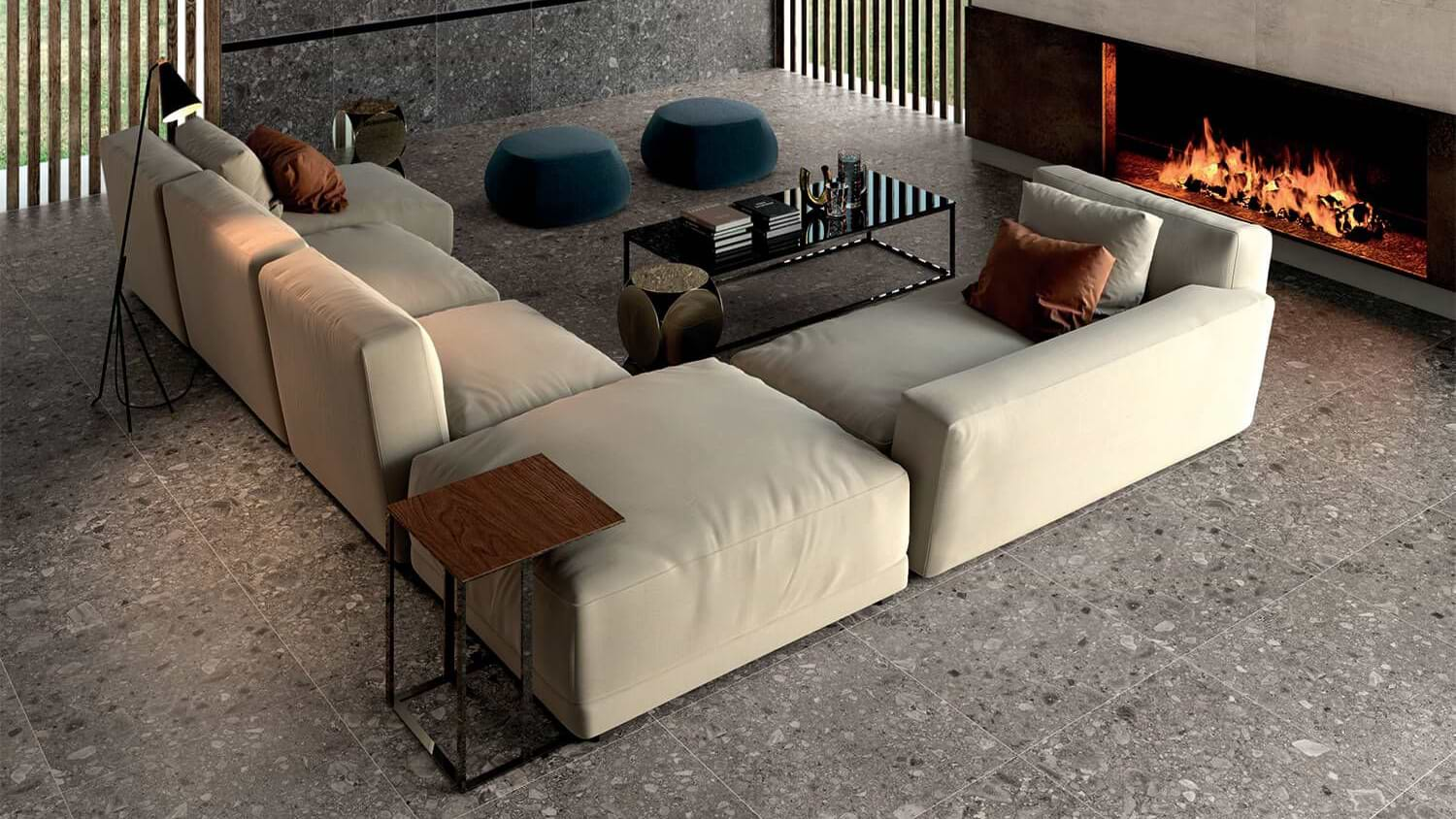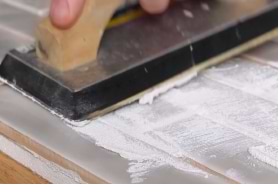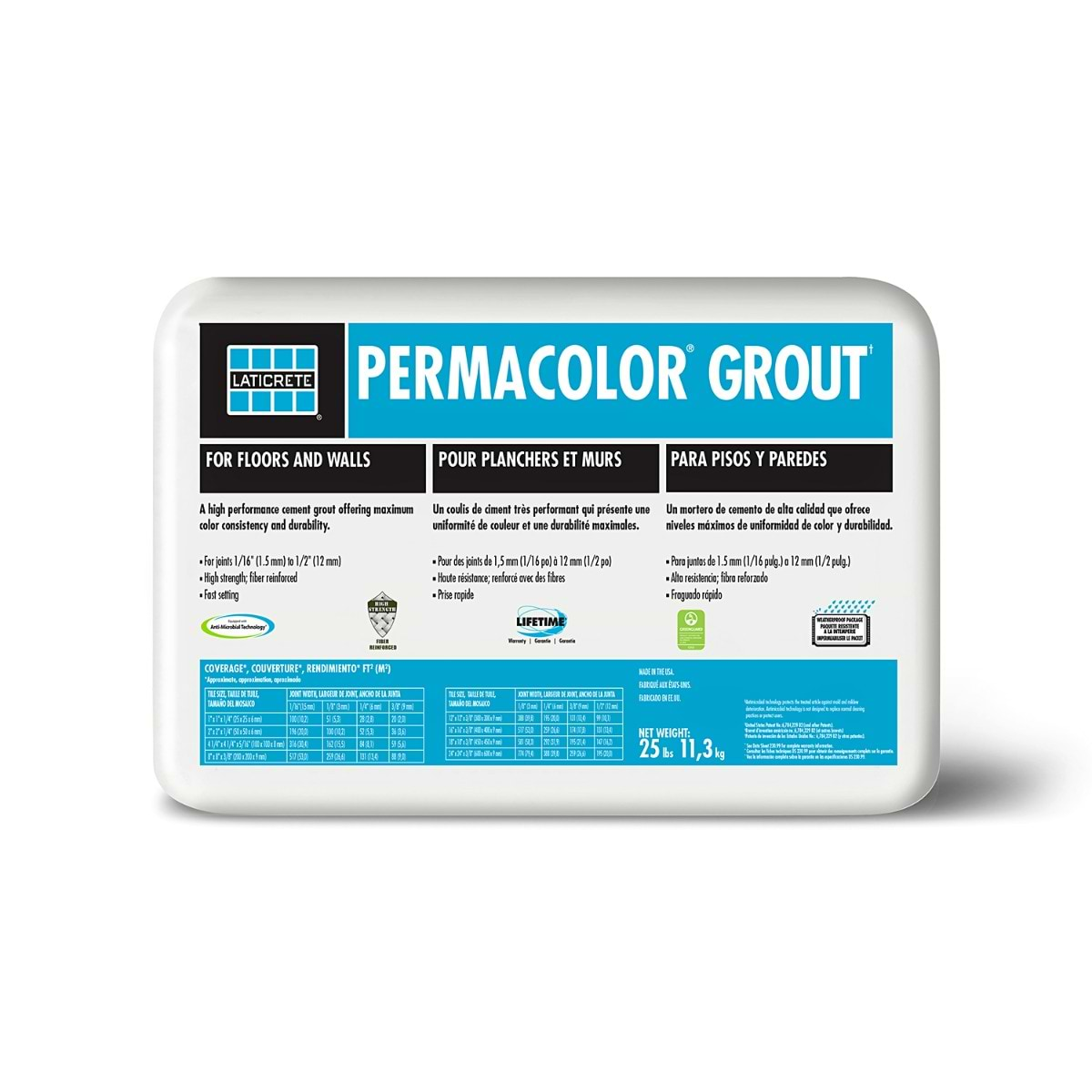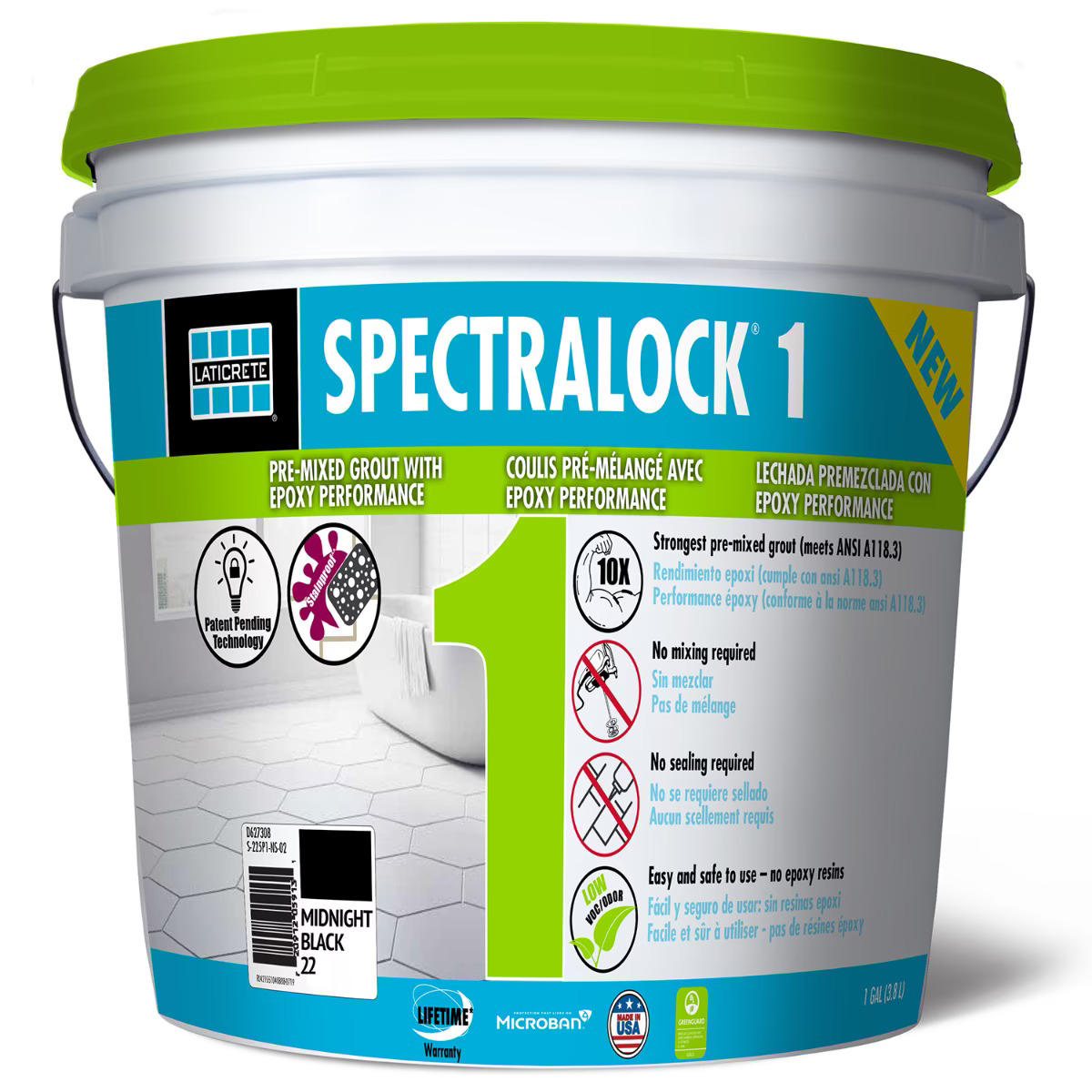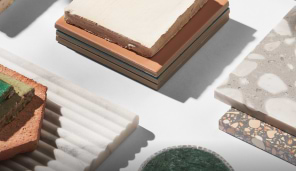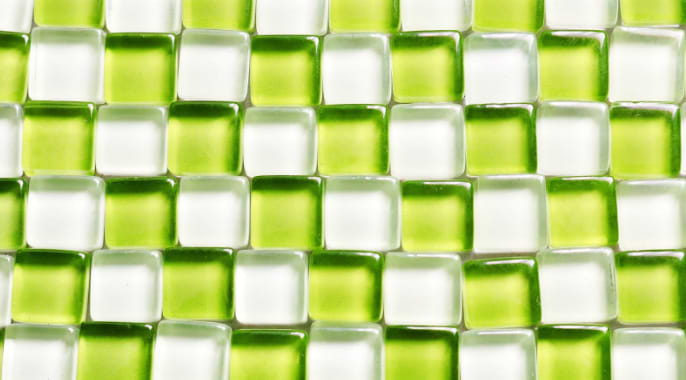Environmentally Friendly Ceramic Tile: Understanding Sustainable Tile Qualities
Environmentally Friendly Ceramic Tile often tops lists of earth-friendly flooring options. But what exactly makes it a green building material suitable for environmentally friendly home projects? Beyond classic durability, stain resistance, and ease of cleaning, EFC tile carries additional environmental merits that builders, designers, and homeowners in 2023 appreciate more than ever. Want to explore these qualities firsthand? Grab 5 samples at the affordable price of $5!
Tile install expert Craig Cahoon explains in his video What is CT made of, that the ingredients comprising this tile speak to its safety, and reusable virtues: ceramic tile is made mainly from clay, talc, sand, and feldspar when fired. This blog explores the composite nature of ceramic and porcelain that facilitates reuse and recycling along with other sustainable attributes like zero-VOC (Volatile Organic Compounds) installations.
Composition of Natural Origins
At its core, tile consists of responsibly resourced raw physical matter like clay, sand, and rock mixtures. Production requires no inputs of hazardous synthetic chemicals.
Kiln firing at extremely high temperatures simply converts these mined earth-based compounds into hardened polished tiles. Specifically, common types break down as, Ceramic and Porcelain Tiles are combinations of clay, silica sand, feldspar, and water.
The variance lies in the final water absorption and this is due to the percentage of clays used, firing temperatures, and process.
Both originate from and return to inorganic earthen substances without toxic footprints. Off-gassing and pollution risks are nonexistent.
Fired For Strength and Safety – Environmentally Friendly Ceramic Tile
In addition to making tile physically durable for long lifespans exceeding other flooring materials, the extreme heat of kilns also purifies component materials. Temperatures reaching over 2,200°F vitrify clays, permanently altering their molecular structure.
This produces a nontoxic, inert finished product that cannot decompose or leach hazardous compounds through off-gassing or contact over time. Tests by agencies like the International Code Council Evaluation Service verify ceramic tile resists:
- Bacterial growth
- Cigarette burns
- UV light damage
- Staining
- Fading
- Wear from foot traffic
Tile’s impermeable enamel-like glazed or unglazed surfaces also repel moisture, inhibiting mold, mildew, and microbes. The fired clay construction provides lasting sterile performance.
Reusable and Recyclable
Ceramic’s production from all-natural clays and minerals means disposing of or repurposing tiles poses no environmental threat. As Craig notes, tile does not have to go into a landfill. It can be ground down and reused. Most tiles contain no mixed modern composites preventing breakdown.
Ground tile can serve as a key ingredient for creating new tile or alternative aggregate building materials. Technologies for recycling tile continue to advance to keep it from landfills. At Tilebar, we offer tile containing pre-consumer recycled content from waste tile shreds.
Damaged tiles otherwise destined for dump sites find renewed purpose in these closed-loop style manufacturing processes. Using recycled tile content also greatly reduces mining demands, transportation emissions, and production energy expenditures compared to relying solely on new natural ingredients. It is a win-win for efficient resource use and waste reduction.
Installs Cleanly Without VOC (Volatile Organic Compounds) Off-Gassing
In addition to the base tile itself, designers and homeowners increasingly demand sustainable installations without volatile organic compounds (VOCs). These vapors get released from traditional glues, and sealants as they cure, contributing to indoor pollution.
Thankfully tile industry innovation now provides excellent low-VOC and zero-VOC versions of essential setting materials. For example, companies now offer full lines of adhesive mortars, grouts, and sealants certified for negligible emissions with the help of agencies. Using these dramatically improves air quality compared to standard types during and after installing ceramic, porcelain, or glass tile.
Combine zero-VOC installation materials with ceramic’s inherent off-gassing-free nature, and you achieve unparalleled indoor air purity. This protects health while aligning with leading building standards like LEED for low-environmental impact interiors.
Additional Sustainable Benefits
Beyond base composition and recyclability, a few supplementary aspects affirm ceramic tile’s environmentally friendly advantages:
Locally sourced: Many U.S. and Canadian brands source raw clays and minerals from regional quarries. Some also operate domestic manufacturing facilities, further reducing transport miles.
Durable lifespans: Properly installed tile lasts 50+ years with appropriate maintenance, avoiding repeat replacement and disposal like other flooring. Its longevity conserves valuable resources over time.
Easy maintenance: Tile requires no toxic cleaning solutions to sustain its appearance. Just simple sweeping, damp mopping, or steam mopping with green detergents keeps it looking like new.
Flexible applications: Tile works beautifully across walls, floors, counters, backsplashes, accent walls, and beyond as design styles evolve. Its versatility prevents tear-outs.
Fire/heat resistance: surpassing limits of various building materials, tile withstands burns, sparks, radiating heat, and direct flames. This assists safety and helps to prevent destroyed structures/waste.
Specifying Sustainable Tiles
With ceramic and porcelain tiles’ far-reaching environmental merits, how should environmentally friendly-minded builders and homeowners evaluate and select the most sustainable options for their needs?
A few key indicators of next-level green ceramic or porcelain tiles include certifications such as:
Scientific Certification Systems (SCS): Validates recycled material claims and safer chemical protocols of products
Cradle to Cradle: Verifies manufacturers follow stringent sustainable practices for sourcing, production emissions, energy use, labor conditions, and corporate transparency
Green Squared: American National Standards Institute (ANSI) standard developed specifically for sustainable tile and installation materials based on multi-attribute criteria
Finding logos associated with reputable certifications helps individuals make informed decisions about selecting environmentally friendly tiles, removing the uncertainty about the products’ adherence to high standards. It makes specifying materials quick and simple for green building projects. Just ask brands for current validation certificates.
Frequently Asked Questions
How long does environmentally friendly ceramic tile flooring typically last compared to other options?
Correctly installed ceramic and porcelain tiles last 50-100 years thanks to durability and stain resistance. Other options like vinyl (20 years), laminate (15 years), and carpet (5-15 years) fail earlier from chips, scratches, discoloration or wearing down.
Can ceramic tile be recycled or does it end up in landfills?
The tile contains natural clay components that can be ground up and reused for making new tile or alternate construction materials with no landfill disposal. Tilebar incorporates recycled content from processing waste tiles.
Do ceramic tiles emit any VOCs or pose indoor air quality risks?
No. Both ceramic tile itself and the best low/no VOC installation materials give off negligible VOC emissions that could lower air purity or respiratory health. This helps spaces qualify for stringent indoor air quality programs like LEED.
Where does ceramic tile rank among the most sustainable flooring options?
Tile rates as one of the “greenest” widely available flooring options thanks to sourcing safe natural raw minerals, the enduring value from extreme durability and timelessness, ease of safe cleaning with just water, and recyclability. Other eco-options may include cork, bamboo, or recycled rubber floors.
Closing the Loop: Tile of the Future
Between naturally derived clays and minerals requiring no harmful additives to achieve beauty and durability, ceramic and porcelain tiles already offer unmatched environmental merits. They install without unhealthy fumes, withstand decades of wear without replacement, and reuse/recycle without downstream contamination.
Yet manufacturers continually push the boundaries reclaiming even more waste tile and perfecting cleaner production methods. For example, innovations like 3D tile printing using recycled glass, paper, wood, and bio-resin hold promise for closing resource loops. Continual progress expands the definition of premium tiles in 2023 and beyond.
Specify thoughtfully, install mindfully, use completely over long lifespans, and ultimately repurpose responsibly – this cycle offers a model for sustainable finishes benefitting any home or commercial space. Tiles with closed-loop origins and afterlife carry designers and dwellers stylishly into the circular economy of the future. Their environmental credentials will only grow stronger with time as technologies and consumer consciousness continue evolving.
Curious to explore these sustainable options firsthand? Experience 5 samples for just $5! Take a step toward a greener, more stylish future for your spaces
Watch Craig’s video What is CT made of



